
Discover the average solar panel installation cost, key price factors, and expert tips to help you budget for your solar project.
Learn which roofing materials are best for installing solar panels


It’s easy to overlook the roof when installing solar panels, but in truth, the roof matters greatly. Most roofing materials can handle a residential solar power system, but certain jurisdictions limit their use on wooden roofing (like cedar shakes) because of fire risk. Regardless, the best roof for solar panels will offer solid support, straightforward installation, and efficiency. The six best roofing options are asphalt, tar and gravel, metal, solar shingles, tile, and green roofs.
| Roof Type | Life Span (Years) |
|---|---|
| Asphalt | 20-30 |
| Tar and gravel | 20-25 |
| Metal | 40-70 |
| Solar | 25-30 |
| Tile | 50-100 |
| Green | 40-50 |
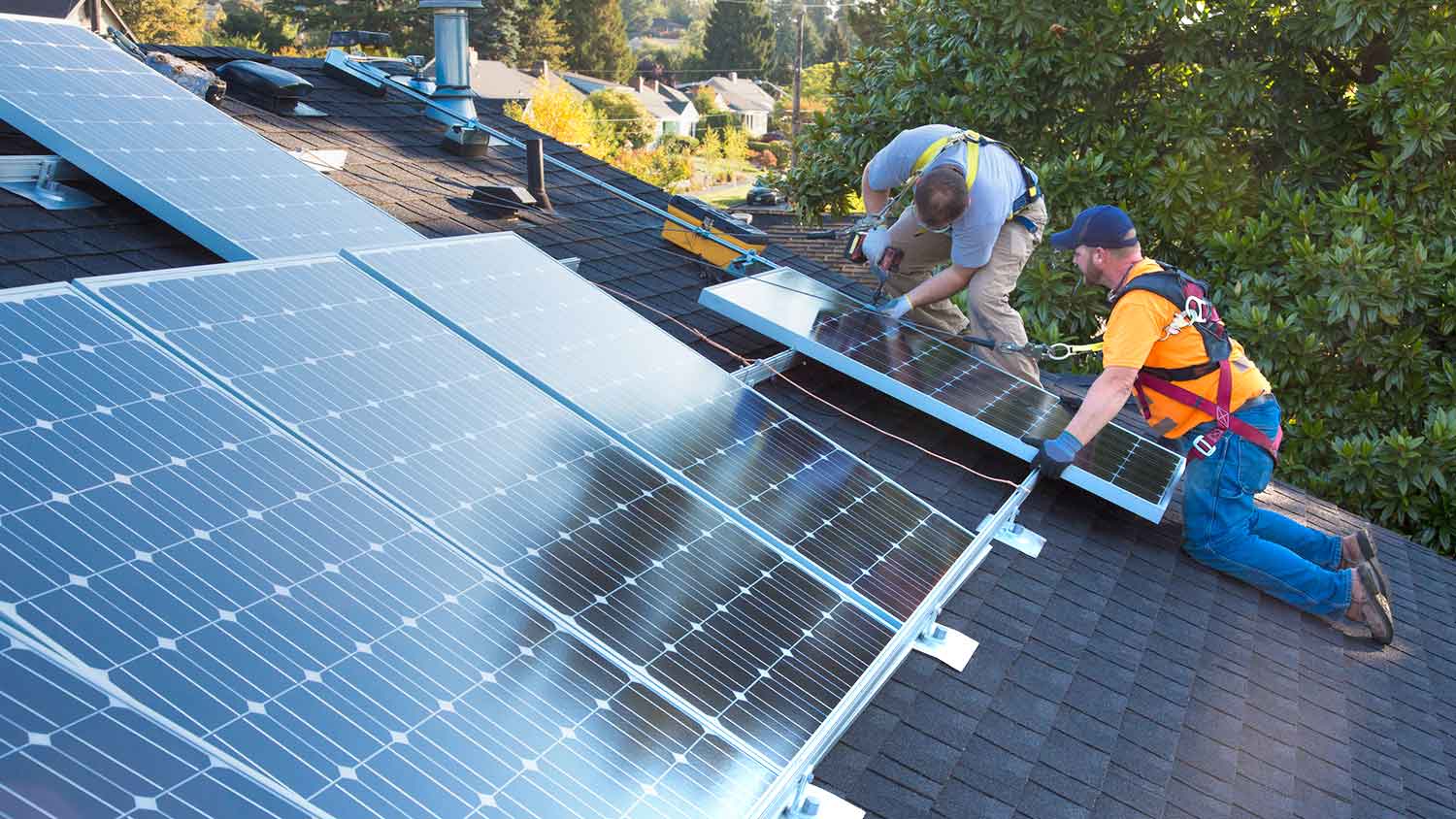
Asphalt shingles (aka composite roofing) are the most common roofing material that homeowners use on houses. Asphalt shingles are one of the best roof materials for solar panels due to their flexibility and durability.
Installing solar panels on asphalt shingles is straightforward. Professionals drill studs into the roof and attach mounts to them. If you have an existing shingle roof, inspect it before installing solar panels. If the shingles are curling, you should consider replacing your roof before installing panels. An older roof—of 10 years or more—may need replacing before installing solar panels.
“It’s highly recommended to replace your roof before installing the panels if it’s worn at all, because it’s a very cumbersome process to replace the roof once you install the panels,” said Ami Feller, Angi Expert Review Board member and owner of Roofer Chicks in New Braunfels, TX. “I would recommend having a roofing contractor give you a thorough roof inspection before installing solar panels.”
The only drawback is that asphalt shingle roofs have a life span of around 20 to 30 years, while standard solar panel warranties last up to 25 years. Homeowners will likely have to replace their roofs during the lifetime of their solar panels, which may lead to extra expenses and possible damage to the solar panels. Ideally, you would aim to install solar panels when you replace your roof to enjoy the maximum life span of both.
| Pros | Cons |
|---|---|
| Durable | Vulnerable to severe weather |
| Affordable | No curb appeal |
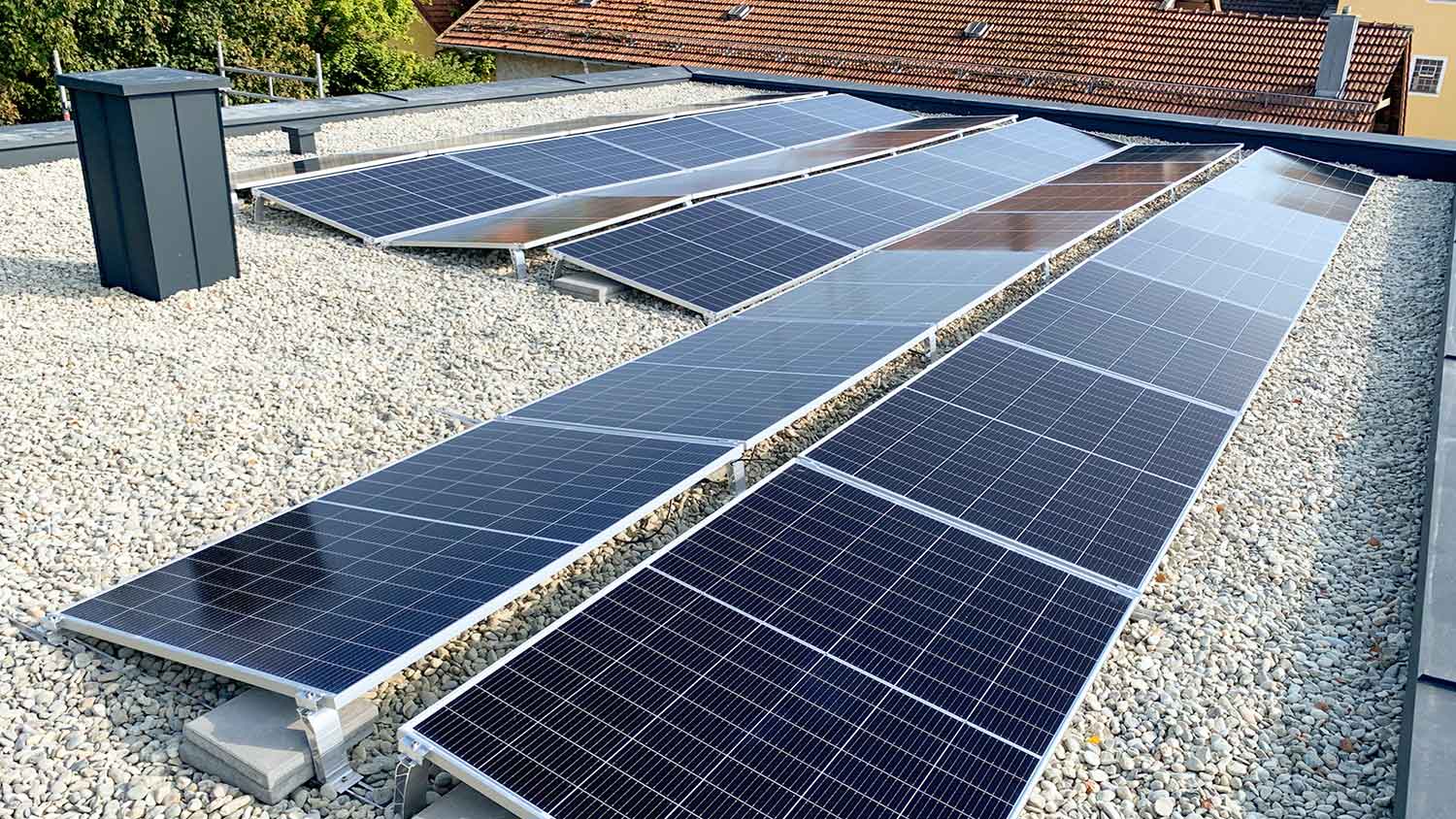
Tar and gravel roofs are likely flat roofs, which makes an excellent option for roof solar panels. This material consists of layers of hot tar, roofing felt, and other mineral coatings. The extra layers of asphalt provide good support for the panels and prevent leaks or cracks.
To install solar panels, however, you will have to invest in a metal racking system to support your panels. Installers can tilt the racking at a 30-degree angle to receive the most sunlight for maximum efficiency.
It depends on where you live, but many homeowners like tar and gravel flat rooftops for solar panels because the roof is budget-friendly, which can offset the cost of the panels. These roofs have a life span of 20 to 25 years. They are properly sealed to prevent potential leaks while providing a great, flat support surface for your solar panel roof system.
| Pros | Cons |
|---|---|
| Prevents leaks | Shortest life span of roof types |
| Affordable | Heavy |
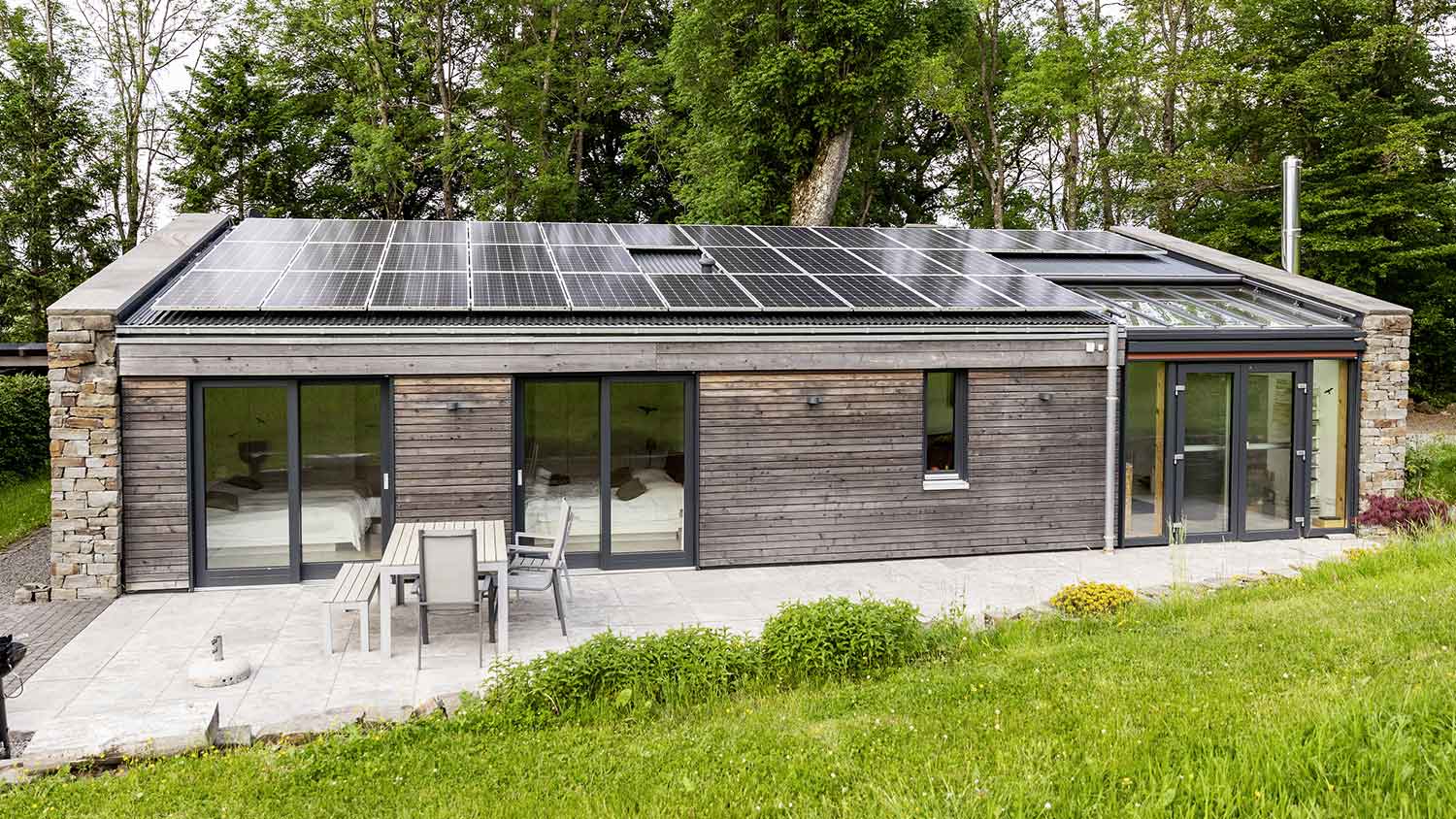
Metal is not just a sustainable roofing material. It’s also one of the best materials to pair with solar panels. It offers a solid surface and long-term durability for the panels.
Installing solar panels is easy on metal roofs. The installers do not need to cut the roofing or drill holes in homes with standing seam metal roofs. Solar panels can be clamped and firmly secured to the raised seams, reducing the cost of labor.
Metal roofs are relatively safe and will not spark into flames during a wildfire or lightning strike. If installed correctly, they will not rust. They are low-maintenance compared to other roofing materials. However, they should be inspected periodically to ensure no repairs are required.
Metal roofs are durable and can easily last anywhere from 40 to 70 years, well beyond the life span of solar panels. And because they often contain large amounts of recycled aluminum, metal roofs are one of the most sustainable roofing options. Solar panels can enhance the cooling effect of a metal roof, creating an eco-friendly home.
| Pros | Cons |
|---|---|
| Very durable | Expensive |
| Energy-efficient | Difficult to repair |
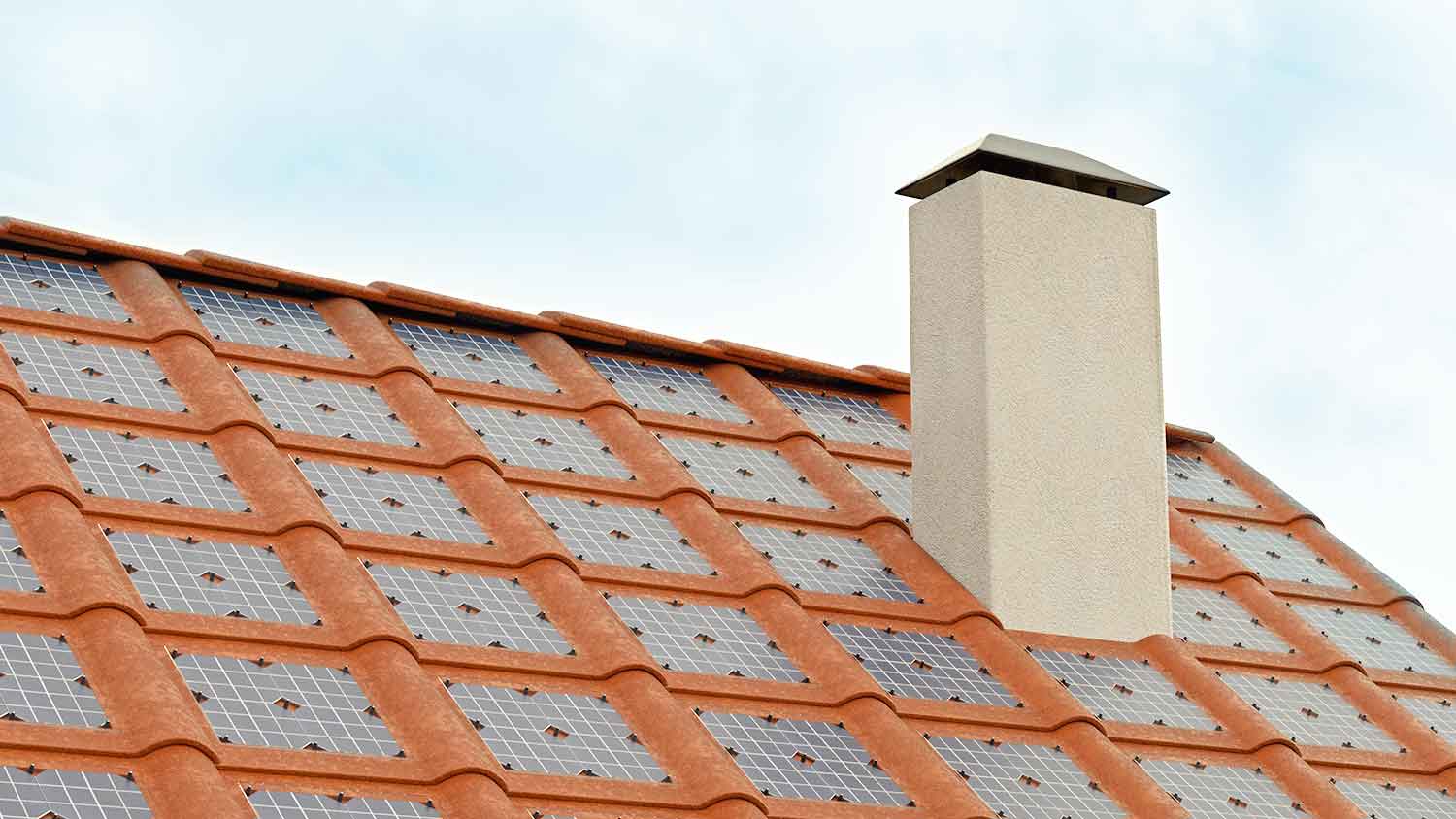
Why not go full solar if you are considering a new material for your roof? Solar roof shingles are a unique and increasingly popular type of energy-efficient roofing that can be more cost-effective than installing a roof and adding a solar system on top of it.
Solar shingles are different from solar panels. Solar shingles are small solar panels embedded in each roof tile. The tiles combine the function of a roof tile and solar panel into one product. These are some of the best roof materials for solar energy due to the design integration of the solar panels, which lets them blend in more easily with the existing roof.
These shingles have innovative options, such as heat-resistant and wind-protective tiles. Solar panel shingles are versatile—they can be removed and reinstalled if you end up moving from your current house. They are also more durable than regular shingles and offer better insulation while operating at optimum temperatures for maximum efficiency (around 77 degrees Fahrenheit). For each degree above or below the optimal temperature, you can expect to lose about 0.3% to 0.5% efficiency, though solar panels work in all climates.
| Pros | Cons |
|---|---|
| Reduced carbon footprint | High cost |
| Versatile | Limited styles |
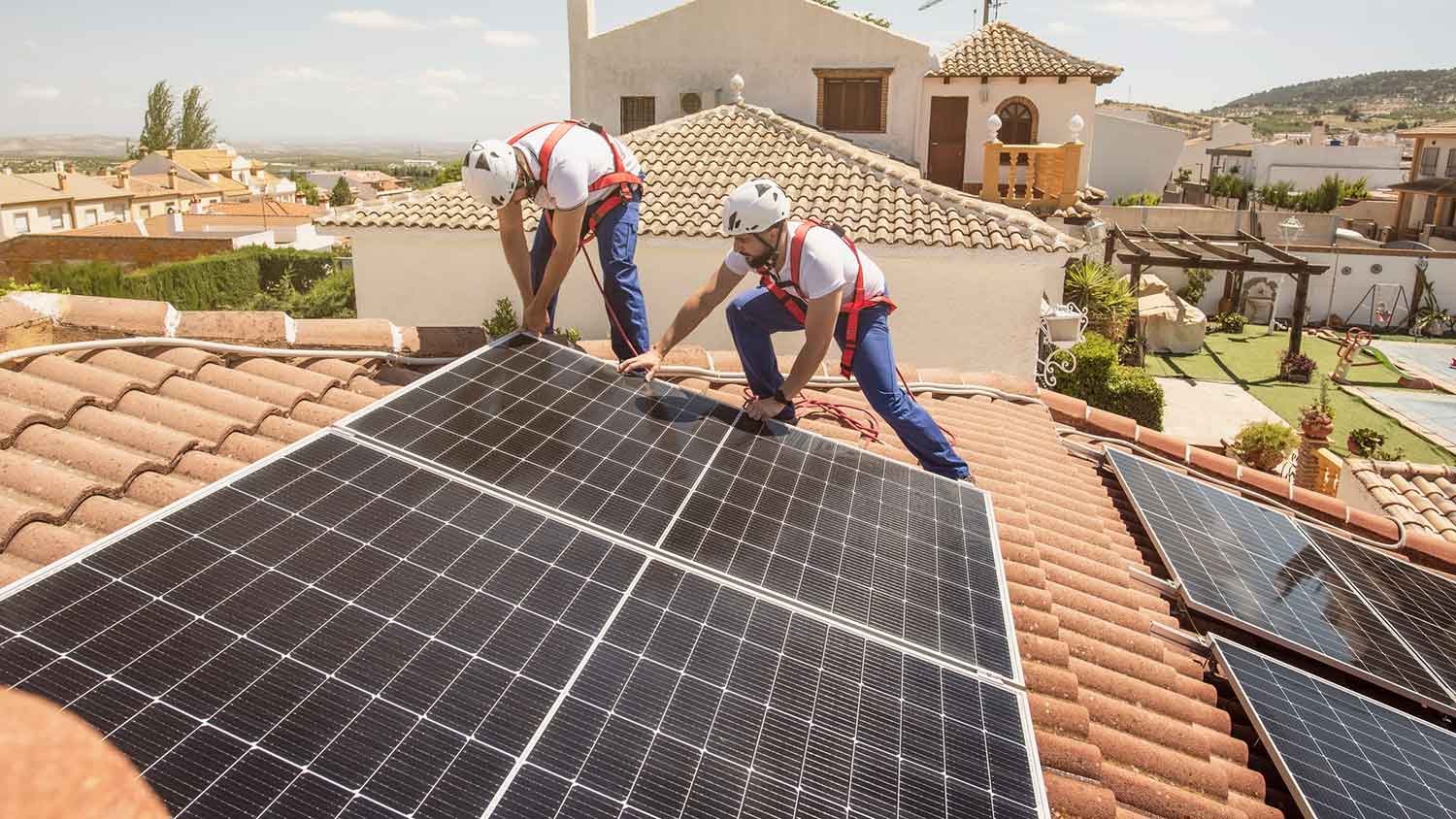
Tile roofing is a durable, heavy, and sturdy option found in areas with warm climates or by the seaside. When properly maintained, a tile roof can last for a century, making it one of the best types of roofing for solar panels.
Installation might be a little tricky. Clay tiles are brittle and can crack under weight. Your solar panel installers will need to move carefully to not damage tiles. You will also need to replace, cut, or remove some tiles during installation, which raises costs. If you have a tile roof, hire an experienced roofer near you to avoid damaging your roof during your solar panel installation.
| Pros | Cons |
|---|---|
| Long-lasting | Expensive |
| Low-maintenance | Brittle |
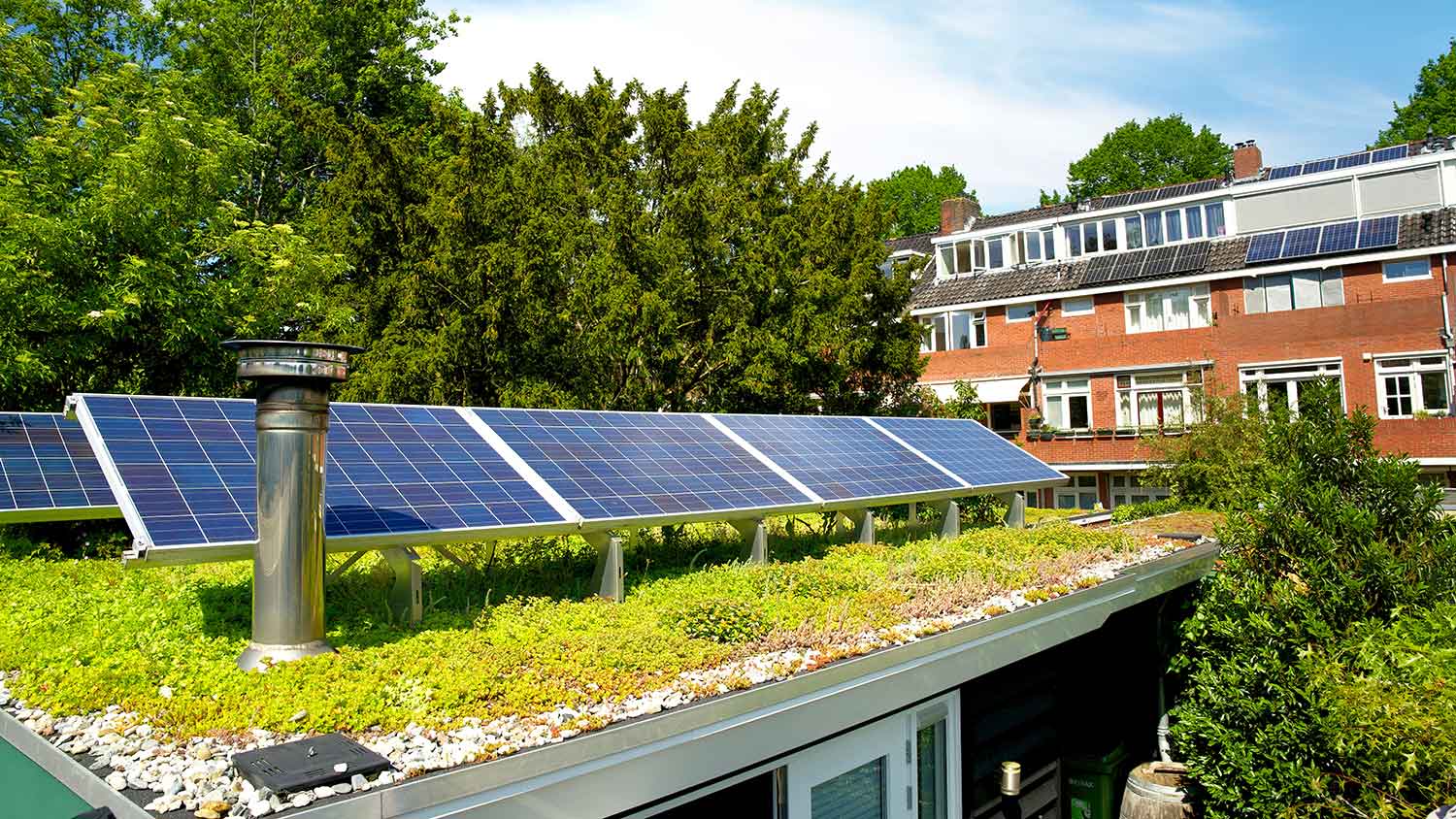
Green roofs are one of the few roofs that can make solar panels more efficient. Also known as a “biosolar” roof, these roofs combine solar panels and vegetation. The vegetation helps keep the panels at the optimal temperature for the best output, while the solar panels create shade that allows a variety of flora to grow.
On their own, green roofs provide a habitat where small animals, birds, and pollinators like bees and butterflies can flourish. According to the U.S. General Services Administration, a well-designed green roof can help prevent flooding in urban areas by reducing and delaying the flow of stormwater by 65%. They also ramp up a home’s energy efficiency. Per the Environmental Protection Agency (EPA), a green roof can be up to 30 to 40 degrees cooler than a traditional roof.
Despite the benefits, green roofs do require more maintenance than traditional roofing. You need to ensure you plant the right plants (so they do not grow over the solar panels) and that panels are installed correctly (so the plants have room to grow around and under them). Planting small native plants can reduce the increased maintenance time these roofs require.
| Pros | Cons |
|---|---|
| Environmentally-friendly | High cost |
| Improved drainage | Requires extra maintenance |
It’s never been a better time to install solar panels and benefit from clean energy. You just need to make sure your roof is suitable. There are many different types of solar panels, and a solar panel installer can advise you and help determine whether solar panels will work for your roof. Here are some factors to consider:
Solar panels work best when angled between 30 and 45 degrees. The exact angle depends on your location’s latitude. Your solar panel installer can let you know which angle is ideal for panels in your city and state.
South-facing solar panels will generate the most power, so it’s ideal that your roof orientation allows for your configuration to face south. Angling your panels to the southwest and southeast directions is the best bet. They’ll also do fine facing east or west but lose some efficiency. The only direction you want to avoid is north.
On average, homes need 18 to 24 solar panels, and the size of a standard solar panel is 17.5 square feet. That means you’ll need 315 to 420 square feet of space on your roof. You can estimate the square footage of your roof size by multiplying the width and length.
Each solar panel weighs about 40 pounds, so an average installation of 18 to 24 panels will add 720 to 960 pounds to your roof. Your roof has to be in good condition to support the weight. One way to gauge your roof’s condition is by its age.
You won’t need a new roof if your current one has at least 20 years of life. However, if your roof has less than 20 years of life, strongly consider getting a new roof. If your roof is due for a replacement in the next five years, replacing your roof before moving forward with your solar project is ideal.
Additionally, your roof should pass an inspection, meaning there shouldn’t be missing or damaged shingles, water leaks, damaged flashing, or gutter issues. These problems are more common when homeowners skip regular roof maintenance tasks.
When considering solar panels, you’ll need to assess your roof's age, size, pitch, and shape. The trees shading your home will also impact whether rooftop solar panels are the best option. A solar panel installation pro can assess your roof and recommend the next steps.
Solar panels last 20 to 25 years, so determine how many years of life your roof has left. If your roof isn’t due to last another 20 to 25 years, installing a new roof first is a good idea. Pushing a new roofing project to a future date means you’ll have to pay for the panels to be removed, which costs $200 to $500 per panel.
Additionally, if your roof has signs of extensive damage or age, like missing shingles or sagging areas, you’ll need a new roof before getting panels. Your roofer and local solar panel installer can make recommendations regarding your roof's condition before adding a new solar panel system.
From average costs to expert advice, get all the answers you need to get your job done.

Discover the average solar panel installation cost, key price factors, and expert tips to help you budget for your solar project.

Discover the average solar panel inspection cost, what impacts pricing, and how to save. Get expert tips to keep your solar system efficient and safe.

There are a few factors to consider when it comes to solar panel repair costs. This guide breaks down the prices of solar panel removal, repair, and replacement.

Learn the differences between grid-tied and stand-alone solar power systems. Our expert comparison guide helps you choose which solar system is best for you.

Who can remove solar panels from roofs? The good news is that there are two types of pros that can handle a job like this—it’s up to you who you hire.

Discover solar panel maintenance costs, including average prices, cost factors, and tips to save, empowering you to keep your solar system running efficiently.